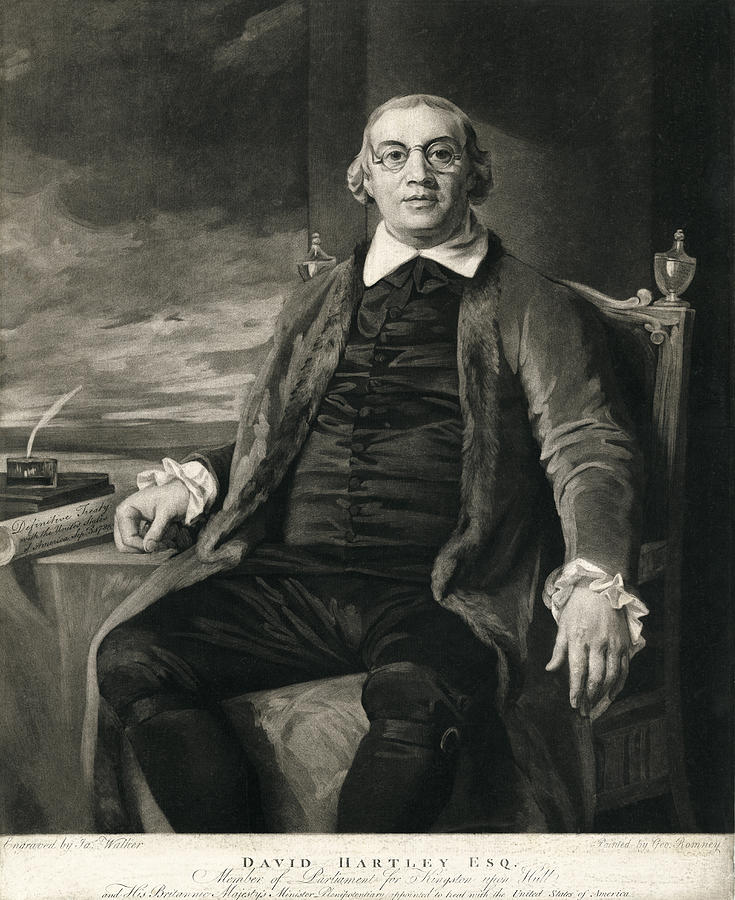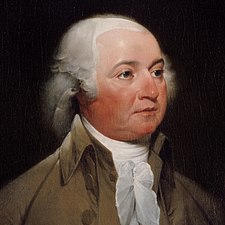http://aamulehdenblogit.ning.com/profiles/blogs/donald-trumpin-ideologia
Kirjoittanut Risto Juhani Koivula (4. lokakuu 2016
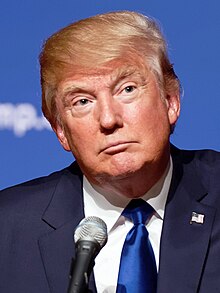
Hillaryn ideologia on tullut jo käsitellyksi hänen apulaistensa kautta, joiden lumoissa hän on, ja päinvastoin. USA:n pressanvaaleissa on perinteisesti paljon päristy uskonnoista ja ehdokkaiden uskontosuh- teesta. Sitä on tehnyt myös Hillary silloin, kun hän rupesi haikailemaan presidenttiehdokkuutta, viime vuosikymmenen alussa. Silloin hänen gloriansa romahti ainakin minun silmissäni, sen verran läpinäkyvää se oli. Kun puolueet olivat tasan samanlaisia, niin ainoita jotka esittivät poliittisia vaihtoehtoja ja myös pitivät niistä kiinni olivat uskontokun- nat, mm. aiheista maahanmuutto, perhe, sodat ja puolustus, sosiaali- politiikka, koulut ja koulutuspolitiikka, jopa terveydenhuolto ja tiede. Obama on ensimmäinen uskontokuntiin kuulumaton presidentti ja ensimmäinen, joka on maininnut uskonnottomat virkaansatujaispuheessaan, joissa on tapana luetella isommat kuppikunnat.
Donald Trump kuuluu USA:n Presbyteerikirkkoon (n. 3mlj. jäsentä laajimpien kriteerien mukaan). Se on Skotlannista alun perin peräisin oleva protestanttinen kirkko, jossa valta on viime kädessä maallikoilla. Presbyteerit ovat vapaamielisiä, ”tieteisuskovaisen” maineessa ja monet, varsinkin napamiehet, ovat olleet unitaristeja eli pyhän kolminaisuuden kiistäjiä, josta johtuen on joskus ollut liipasimella, hyväksytäänkö heitä lainkaan kristityiksi muissa kirkoissa.
[Huom! Tuo nykyään itseään ”USA:n vanhimmaksi presbyteeriksi seurakunnaksi” mainostava kirkko on perustettu 1662 Lontoon piispan alaisena episkopaalisena eli anglikaanisen kirkon ylivallan tunnustavana seurakuntana, jolloin jo alueen hollantilaset ja muut kalvinistit jäivät pois. Nimi on kyllä saattanut jo tuolloin olla presbyteerinen, katolisten käyttämässä haukkumanimimerkityksessä kaikista protetanteista USA:ssa.
Ensimmäinen opillisesti spesiaalisesti presbyteerinen kirkko, Presbyterian Church in the United States of America ja itse oppikin syntyivät USA:n itsenäisyystaistelun jälkeen 1789. The Presbyterian Church in the United States of America (PCUSA) was the first national Presbyterian denomination in the United States,existing from 1789 to 1958. In 1958, the PCUSA merged with the United Presbyterian Church of North America, a denomination with roots in the Seceder and Covenanter traditions of Presbyterianism. The new church was named the United Presbyterian Church in the United States of America. It was a predecessor to the contemporary Presbyterian Church (USA).
Tunnustukselliset anglikaanit marssivat ulos First presbyterian Church -seurakunnasta 1704. Joukko erillisiä presbyteerisi’ virtauksia liittyi nykyiseksi USA:n Presbyteerikirkoksi (PCUSA) 1958 Donaldin ollessa 12-vuotias, joten hän on joka tapauksessa liittynyt juuri siihen.]
In an April 2011 interview on The 700 Club, he commented: ”I’m a Protestant, I’m a Presbyterian. And you know I’ve had a good relationship with the church over the years. I think religion is a wonderful thing. I think my religion is a wonderful religion.” [574] [575] Trump told a 2015 South Carolina campaign audience he attends Marble Collegiate Church, where he married his first wife Ivana in 1977. Marble has said that,though Trump has a longstanding history with the church, he is not an active member of Marble. [573] [577] Trump has said that although he participates in Holy Communion, he has not asked God for forgiveness for his sins. He stated, ”I think if I do something wrong, I think, I just try and make it right. I don’t bring God into that picture.” [576] ”
Trumpin setä fysiikan professori Dr. John G. Trump (1907 – 1985) oli unitaaripresbyteeri
Trumpin isän Fred Trumpin uskonasioista ei ole muita mainintoja kuin että hänen tiedetään olleen ”menestyksenteologia”-kalvinistisaarna Norman Vincent Pealen ystäviä ja ihailijoita ja hänen hautajaisensa pidettiin Manhattanin Marmorikirkossa. Fredin vanhemmat Frederick Trump ja Elizabeth Christ Trump olivat syntyisin luterilaisesta Kallstadtin viininviljelijäkylästä, jossa oli muuten syntynyt myös Johann Heinrich Heinz, jonka poika säilyketehtailija Henry John Heinz oli liukuhihnan käyttöönottaja eikä Henry Ford, joka toi sen koneteollisuuteen; firman nykyisiin omistajiin kuuluu John Kerry. Donaldille Norman Pealen tuomitutkin puoskariopit eivät siis kelvanneet TOISIN kuin Biderberg-meedia valehtelee! Hänen äitinsä Mary McLeod oli syntyisin Skotlannista Lewisin saaren Tongin kylästä ja ilmeisimmin sikäläinen Free Church of Scotland -presbyteeri. (Erotukseksi unitaareista, jotka uskovat pelkkään Pyhään Henkeen, nämä uskovat pelkkään Jeesus Kristukseen.)
Kovimman sarjan mielipidevaikuttaja Donaldiin lienee ollut setä, professori John G. Trump (joka oli opiskellut Fred-veljensä rahoilla tämän sijoituksena USA:n puolustuspolitiikkaan kuten Donaldin Sotilasakatemiakin).
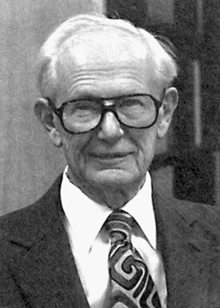
JOHN TRUMP DIES; ENGINEER WAS 78
Published: February 26, 1985
Dr. John G. Trump, a retired teacher and engineer, died Thursday at his home in Cambridge, Mass., after a long illness. He was 78 years old.
Dr. Trump began studying the voltage-insulation properties of high vacuum and com- pressed gases while a faculty member at the Massachusetts Institute of Technology. Working with Prof. Robert J. Van de Graaff, he designed one of the first million-volt X-ray generators. Used initially for clinical purposes at the Collis P. Huntington Memorial Hospital in Boston in 1937, it was a development that provided additional years of life to cancer patients throughout the world.
In 1946, Dr. Trump, along with Dr. Van de Graaff and Dr. Denis M. Robinson, founded the High Voltage Engineering Corporation, which developed the Van de Graaff electrostatic generator.
In World War II Dr. Trump was influential in the development of radar and short-wave radar equipment. He was appointed director of the British branch of the M.I.T. Radiation Lab in 1944.
After the war. Dr. Trump, while still on the faculty at M.I.T., became associated with the Department of Radiology at the Lahey Clinic in Boston and later became chairman of its board. Under his direction rotational radiation therapy was developed, ”an idea that created quite a stir in those days,” he recalled later. He also conceived and developed the use of high-energy electrons in the treatment of superficial skin lesions.
He Received Emeritus Status
He became professor emeritus at M.I.T. in 1973, remaining on as a senior lecturer.
He was the author of nearly 80 scientific publications and the recipient of many awards, including His Majesty’s Medal, given by George VI in 1947; the President’s Certificate of Merit, presented by President Truman in 1948; and the Lamme Medal, awarded in 1960 by the American Institute of Electrical Engineers. In 1983, he was the recipent of the National Medal of Science.
He was a graduate of the Polytechnic Institute in 1929, received a master’s degree in physics from Columbia University in 1931 and a doctorate from M.I.T. in 1933.
Dr. Trump is survived by three children, John Gordon Trump of Watertown, Mass., Christine Philp of Pittsfield, Mass., and Karen Ingraham of Los Alamos, N. M.; and six grandchildren. He was the brother of Frederick C. Trump and the uncle of Donald Trump, New York real estate developers.
A funeral service will be held Sunday at 2:30 P.M. at the Unitarian Church in Winchester, Mass.
photo of Dr. John Trump
Siinä yhteysessä se itsekin sai USAlaisen muotonsa poliittisten tapahtumien vyöryssä ja jopa ytimessä. Sen johtaja Princetonin yliopiston perustaja John Whitherspoon, ja Pennsylvanian presidentti Benjamin Franklin olivat Perustajakonvention jäseniä ja näiden tieteellinen oppi-isä, kirkon pappi ja opin tärkeä muotoilija, kemisti, hapen yksi keksijä Joseph Priestley toimi ministerinä.
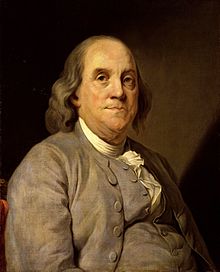
Franklin started exploring the phenomenon of electricity in 1746 when he heard of the Leyden Jar. Franklin proposed that ”vitreous” and ”resinous” electricity were not different types of ”electrical fluid” (as electricity was called then), but the same electrical fluid under different pressures. He was the first to label them as positive and negative respectively, [37][38] and he was the first to discover the principle of conservation of charge.[39] In 1748 he constructed a multiple plate capacitor, that he called an ”electrical battery” (not to be confused with Volta’s pile) by placing eleven panes of glass sandwiched between lead plates hung from silk cords and connected by wires.[40]
In 1750,he published a proposal for an experiment to prove that lightning is electricity by flying a kite in a storm that appeared capable of becoming a lightning storm. On May 10, 1752, Thomas-François Dalibard of France conducted Franklin’s experiment using a 40- foot-tall (12 m) iron rod instead of a kite, and he extracted electrical sparks from a cloud. On June 15 Franklin may possibly have conducted his well known kite experiment in Philadelphia, successfully extracting sparks from a cloud.
Franklin’s experiment was not written up with credit[41] until Joseph Priestley’s 1767 History and Present Status of Electricity. Franklin was careful to stand on an insulator, keeping dry under a roof to avoid the danger of electric shock. [42] Others, such as Prof. Georg Wilhelm Richmann in Russia, were indeed electrocuted during the months following Franklin’s experiment.
Kielellisen ajatteluteorian neurofysiologisen keksijän David Hartleyn oppi aivojen valkeasta aineesta ajattelun ja ”sielun”, joka omaksutaan kielellisesti, tyyssijana kuuluu Joseph Priestleyn liittämänä oppiin:
Hartley, David,
1705–57, English physician and philosopher, founder of associational psychology. In his Observations on Man (2 vol., 1749) he stated that all mental phenomena are due to sensations arising from vibrations of the white medullary substance of the brain and spinal cord. He conceived the whole mind as resulting from the association of simple sensations. See associationism
.
The Columbia Electronic Encyclopedia™ Copyright © 2013, Columbia University Press. Licensed from Columbia University Press. All rights reserved. www.cc.columbia.edu/cu/cup/

The English chemist and philosopher J. Priestley vigorously propagated Hartley’s teachings.
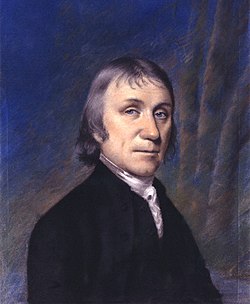
I’ve been writing about the on-again, off-again correspondence of Benjamin Franklin and David Hartley, British scientist and Member of Parliament. Their relationship actually turned out to be a factor in the end of the war.
After London received news of the Battle of Yorktown, Lord North’s government fell. In March 1782 power shifted to the Marquess of Rockingham, longtime leader of the opposition, with a mandate to bring the American War to a close before it cost even more money. Rockingham filled the post of prime minister for all of four months before he died of the flu.
The Earl of Shelburne, one of Rockingham’s secretaries of state, took over. He was already steering negotiations with the U.S. of A.’s European diplomats through his envoy, the merchant Robert Oswald. By November 1782 Oswald worked out preliminary articles of peace with Franklin in France.
Meanwhile, Rockingham’s other secretary of state, Charles James Fox, refused to serve under Shelburne. He led other Rockingham Whigs, such as Edmund Burke, out of government. (That created openings for such rising politicians as William Pitt, who became Chancellor of the Exchequer at the age of twenty-three; they didn’t call him “the Younger” for nothing.)
David Hartley had opposed the American War all along, but he also disliked Shelburne and voted against the preliminary articles for peace.Hartley was a Fox ally,and he also maintained a personal friendship with Lord North, despite their political differences.
In April 1783 Fox and North, longtime opponents, made a surprising alliance to force Shelburne out of power. Shortly afterwards, George III appointed Hartley the new negotiator with the Americans. Fox and North both trusted Hartley, and they thought his friendly correspondence with Franklin would help to finish the negotiations on favorable terms.
Hartley walked into a very complex situation since France, Spain, and the U.S., though formally allied and bound to negotiate together, were all secretly angling for their own advantages and undercutting each other. Though there weren’t any more major cam- paigns on the North American continent, naval battles in the Caribbean and the siege of Gibraltar were still going on, tipping the balance of power and affecting different nations’ hunger for peace.
The Americans in Paris insisted on making very few changes to the terms they had reached with Oswald. If Hartley wasn’t going to sign over Canada, they weren’t about to concede anything else. France and Spain, meanwhile, thought the Shelburne ministry’s agreement to give the new American republic land all the way west to the Mississippi River was quite generous already.
In the end, the Treaty of Paris was basically what Oswald had negotiated eight months earlier. Hartley had voted against those terms, but his main contribution to the final treaty was the “Paris” part—he refused to leave the city for Versailles. On 3 Sept 1783, Hartley signed the final Treaty of Paris on behalf of Great Britain. Franklin, John Adams, and John Jay signed on behalf of the U.S.
(The picture below is Benjamin West’s famous unfinished canvas of the American diplomats involved in the negotiations in Paris. Hartley declined to pose.)
David Jr.:lla oli asema Merton College -nimisen oppilaitoksen tutkijana ja opettajana (fellow) 18-vuotiasta 82-vuotiaaksi, kuolemaansa saakka. Vuonna 1774 hänet valittiin Parlamantin jäseneksi. Hän ryhtyi ajamaan orjuuden ja sen hyödyntämisen kaikinpuolista kieltämistä, joka hyväksyttinkin 1776, orjuus kiellettiin siis Isossa-Britanniassa 90 vuotta aikaisemmin kuin USA:ssa. Tässä yhteydessä käytettiin termiä ”ihmisoikeus” nykyaikaisessa merkityksessä kaikkia ihmisiä koskevana varmaan ensimmäistä kertaa lakitekstissä, Sitä perusteltiin ”Jumalalla”. (Tämä EI ole sama kuin yhtäläinen ihmisarvo lain edessä, sellaista Englannissa ei vielä ollut.) Eikä tämäkään koskenut siirtomaiden eikä edes siirtokuntien sisäisiä asioita,vaan Parlamentin vallan aluetta. Laki oli tähdätty kapinoivia siirtokuntia vastaan. Mutta Hartley vastusti myös sinne myönnettäviä sota- määrärahoja. Hän nousi lopulta kuninkaan valtuutetuksi rauhansopimuksen tekijäksi, kun muut olivat epäonnistuneet.
Vuonna 1994 hän puolusti Ranskan vallankumousta, mikä oli ennenkuulumatonta Englannissa. Hän joutui ilmeisesti hyllylle poliittisista tehtävistä, mikä oli onneksi, sillä hän rupesi toimittamaan kirjoiksi isänsä tieteellistä tuotantoa, teokset ovat hänen kokoamiaan n.30 vuotta jälkikäteen. Hän ryhtyi vanhemmiten tutkimaan myös uudestaan mekaniikkaa ja rakennutekniikkaa tarkoituksena kehittää palamaton rakennus ja laiva. Tuol- loinhan palamisen luonne oli juuri keksitty mm. Priestleyn toimesta. Keinona olivat metallilaatat, jotka joiden piti estää pintojen syttyminen ja palavan aineen hapensaanti. Lontoon palon 110-vuotismuistomerkki päällystettiin hänen kehittämillään palonestolaatoilla. Tämä tosin oli vaatimatonta uuden palamistieteen sovellutusta verrattuna siihen, että Ranskan vallankumouksellisen konventin puheenjohtaja, ilmeinen aateveli, sittemmin Napoleonin sotaministeri, fyysikko Lazare Carnot kehitteli polttomoottoria.
Princeton University is a private Ivy League research university in Princeton, New Jersey, United States.
Founded in 1746 in Elizabeth as the College of New Jersey, Princeton was the fourth chartered institution of higher education in the Thirteen Colonies [7][a] and thus one of the nine colonial colleges established before the American Revolution. The institution moved to Newark in 1747, then to the current site nine years later, where it was renamed Princeton University in 1896.[12]
Princeton provides undergraduate and graduate instruction in the humanities, social sciences, natural sciences, and engineering. [13] It offers professional degrees through the Woodrow Wilson School of Public and International Affairs, the School of Enginee- ring and Applied Science, the School of Architecture and the Bendheim Center for Finance. The university has ties with the Institute for Advanced Study, Princeton Theological Seminary, and the Westminster Choir College of Rider University. [b] Princeton has the largest endowment per student in the United States. [14]
The university has graduated many notable alumni. It has been associated with 42 Nobel laureates, 21 National Medal of Science winners, 14 Fields Medalists, the most Abel Prize winners and Fields Medalists (at the time of award) of any university (five and eight, respectively), 10 Turing Award laureates, five National Humanities Medal recipients, 209 Rhodes Scholars, and 126 Marshall Scholars.[15] Two U.S.Presidents (James Madison 1809-1817, Woodrow Wilson),12 U.S.Supreme Court Justices (three of whom currently serve on the court), and numerous living billionaires and foreign heads of state are all counted among Princeton’s alumni. Princeton has also graduated many prominent members of the U.S. Congress and the U.S. Cabinet, including eight Secretaries of State, three Secretaries of Defense, and two of the past four Chairs of the Federal Reserve.
James Madison
 |
|
| 4th President of the United States | |
| In office March 4, 1809 – March 4, 1817 |
New Light Presbyterians founded the College of New Jersey in 1746 in order to train ministers. [16] The college was the educational and religious capital of Scots-Irish America. In 1754, trustees of the College of New Jersey suggested that, in recognition of Governor’s interest, Princeton should be named as Belcher College. Gov. Jonathan Belcher replied: ”What a hell of a name that would be!” [17] In 1756, the college moved to Princeton, New Jersey. Its home in Princeton was Nassau Hall, named for the royal House of Orange-Nassau of William III of England.
Abraham Lincoln ammuttiin lauantain vastaisena yönä, kun hän oli seuravana sunnuntaina liittymässä Presbyteeriseurakunnan jäseneksi, jonka kirkossa oli perheineen käynyt koko presidenttiaikansa. Tämä salattiin vuosikymmeniä rikostutkinnallisista syistä, koska se olisi voinut olla mahdollisen salaliiton motiivi.
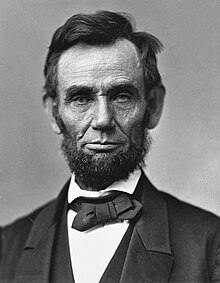
President Lincoln in 1863
|
|
| 16th President of the United States | |
| In office March 4, 1861 – April 15, 1865 |
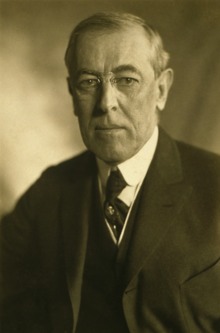
Woodrow Wilson, Kansainliiton perustaja, USA:n presidentti 1912-21, Princtonin yliopiston rehtori 1902-10, historioitsija, Rauhan nobelisti 1919, presbyteeri.
USA:n 2. presidentti 1787 – 1801 John Adams (1735 – 1826) oli unitaaripresbyteeri.
Johtavaan jehovantodistajaperheeseen, jonka koti mm. toimi alueensa valtakunnansalina, syntynyt Dwight Eisenhower, joka oli välttänyt kasteen kirjautumalla sotilasakatemiaan (mikä sai hänen äitinsä masentumaan) liittyi Presbyteerikirkkoon presidentiksi tullessaan 1953. Syynä lienee ollut, ettei presidentin ”sopinut” olla uskonnoton, ja Presbyteerikirkko oli opillisesti ”löysin” ja liberaalein.
General of the Army
Dwight D. Eisenhower
 |
|
| 34th President of the United States | |
| In office January 20, 1953 – January 20, 1961 |
Unitarismi = areiolaisuus = arianism, Locken, Newtonin, Descartesin, Galilein, Priesleyn ja monien muiden tiedemieten maailmankatsomus
Looks briefly at anti‐Trinitarian tendencies in sixteenth‐ and seventeenth‐century Britain (with special attention to Ralph Cudworth and John Locke), but concentrates on the eighteenth century, when Arianism was a significant feature of the ecclesiastical scene, especially among leading intellectual figures both in the Church of England and among the Presbyterian churches. Detailed studies of the theologies of Isaac Newton, William Whiston, and Samuel Clarke. Traces the collapse of this Arian‐ style anti‐Trinitarianism in the Church of England and the tendency of heterodox dissenters, such as Joseph Priestley, to adopt a Unitarian view. Suggests that the diminishing acceptance in the wider culture of belief in a transcendental spirit world was an important factor in that tendency, leading to a third death of Arianism.
Keywords: Clarke, Cudworth, Locke, Newton, Presbyterian, Priestley, spirit world, Unitarian, Whiston
Oxford Scholarship Online requires a subscription or purchase to access the full text of books within the service. Public users can however freely search the site and view the abstracts and keywords for each book and chapter.
Presbytereian radicalism:
(Kirjoittaja, Trumpin kannattaja Fay Voshell edustaa Princetonin Teologisen aikatemian oikeaa laitaa ja arvostelee radikalisoitumiskehitystä.)
http://www.americanthinker.com/articles/2013/06/the_radicalization_of_the_church.html
” The capitulation to multiculturalism was on full display in the 2010 opening ceremonies for the Presbyterian Church USA General Assembly. The convocation’s worship service included a processional led by devotees dressed as buffalo, eagles, skunks, rabbits, and wolves performing Native American rituals perhaps best dedicated to worship of the Sky Father rather than to Jesus Christ.
But perhaps no observer should have been surprised at grownups parading as animals in supposed honor of Native American heritage, as the PCUSA has suffered through more than one heretical kerfuffle inspired by the latest leftist fads.
In 1994, radical feminists within the PCUSA conducted ceremonies featuring the worship of Sophia, goddess of wisdom. According to the New York Times report on the meeting, the Sophia devotees prayed, ”Our maker Sophia, we are women in your image; with the hot blood of our wombs we give form to new life. With nectar between our thighs we invite a lover,” they continued, and ”with our warm body fluids we remind the world of its pleasures and sensations.”
The Times author wryly noted, ”Phrases like that may be familiar to devotees of feminist religious rituals, but they are likely to stop conversation at the average church picnic.”
Apparently calling on Sophia to provide male lovers was found too limiting by some. One speaker called for ”lesbian, bisexual and transsexual women to join her onstage. The audience applauded as about 100 women answered.” The speaker of 1994 would be pleased to know that in 2011, the denomination voted to allow openly gay and lesbian clergy.
As Mark Tooley of the American Spectator reports, transgenderism is now permeating the liberal churches. He writes, ”Last year’s Episcopal General Convention officially affirmed transgendered clergy, protecting against ’discrimination’ based on ’gender identity and expression.’ One bishop celebrated with a transgendered themed prayer: ’Spirit of Life, we thank you for disordering our boundaries and releasing our desires as we prepare this feast of delight,’ she began. ’Draw us out of hidden places and centers of conformity to feel your laughter and live in your pleasure.’ ”
Tooley adds the PCUSA, apparently anxious not to be outdone by their Episcopal brethren, now has one Presbyterian clergy who is ”a post-operative transsexual from male to female, additionally now professing to be lesbian and married to a woman.” The reduction of the PCUSA and other Main Line denominations to what is increasingly a leftward leaning sideshow might be hilarious if it were not more heartbreaking than funny. The church, now increasingly committed to a paganism characterized by what should be acknowledged as a sex cult, was once an august institution deeply rooted in an orthodoxy firmly planted in biblical soil.
The Presbyterian Church, along with Reformed churches, was at one time profoundly influenced by a Calvinism that characterized the thinking of men such as Abraham Kuyper. Kuyper articulated a powerful Christian worldview that was to influence the thinking of Cornelius Van Til at Princeton and Westminster Seminary. Kuyper insisted Christians needed to have a Christian way of looking at all spheres of life and culture — personal, church, and public. His Stone Lectures, given at the now left-leaning Princeton Theological Seminary, have retained their relevance, particularly for the world of politics, in which Kuyper was heavily invested.
In view of it’s the vast reformed heritage, a heritage that included such theologians as Charles Hodge and B.B. Warfield, just how the PCUSA has been reduced to such trendy trivialities is hard to comprehend.
What happened?
Syncretism, sometimes called the most powerful enemy of the Church, is what happened.
Basically, the PCUSA allowed the increasingly radicalized secular culture surrounding it to speak into, inform, and ultimately to define the Church. It forgot its biblical roots and jettisoned the historic theological view that the Church is to speak to the world, not vice versa.
Liam Goligher, current pastor at Philadelphia’s 10th Presbyterian Church, which split from the PCUSA, puts it this way:
When Tenth left PCUSA, the principle objection lay with authority. In the end what rules the church? Is it culture or is it scripture? Tenth took its historic commitments seriously and submitted to the supreme authority of Scripture as God’s word written. […] It is Tenth’s clear and unadorned adherence to biblical orthodoxy that has led to the ’trumpet giving no uncertain sound.’ It means preaching and worship ring with certainty and authenticity and where others are swept here and there by the changing tides of cultural change, Tenth has remained firm and secure in the rock of God’s revelation.
The Church has traditionally believed in a God who has revealed himself in scripture and a God whose authority transcends all times, places, nations, empires, and their governments. This means any church still committed to the idea of a transcendent and sovereign God who has spoken and who has laid down irrevocable rules for the conduct of mankind will inevitably find itself in continual conflict with secularist thinking and structures.
Unfortunately, if the impulse of the Main Line denominations has included a syncretism that includes worshipping a pantheon of gods and goddesses, the response of the conservative churches to the relentless pounding of a left-leaning, secularist world view has often been flight rather than fight.


